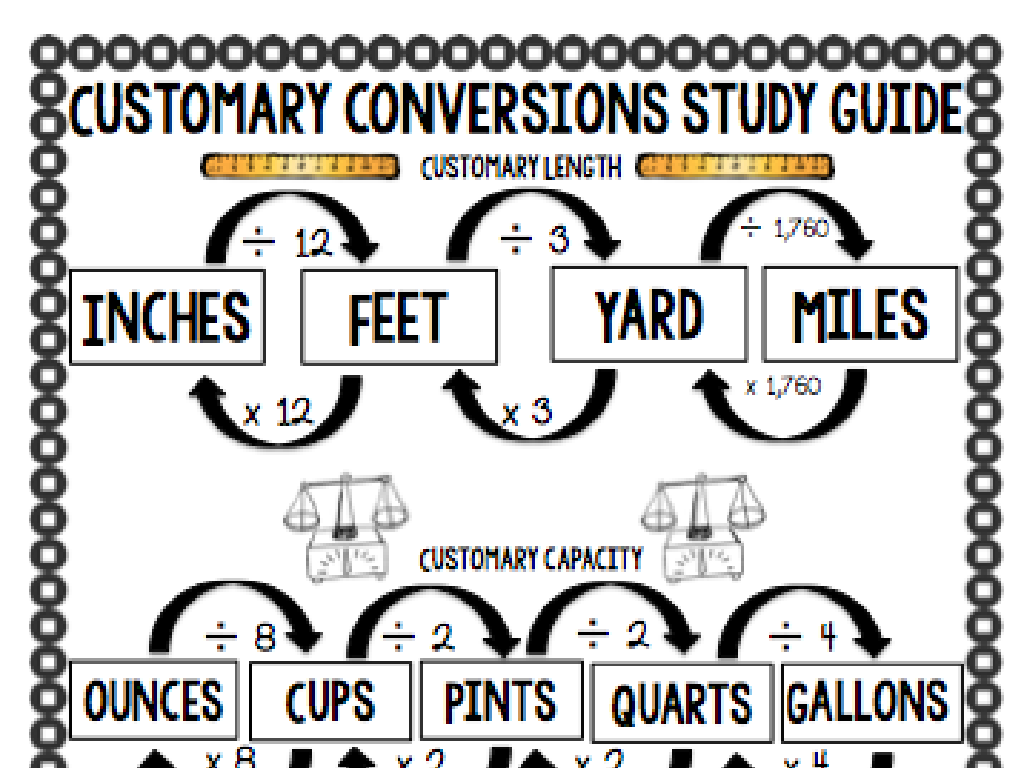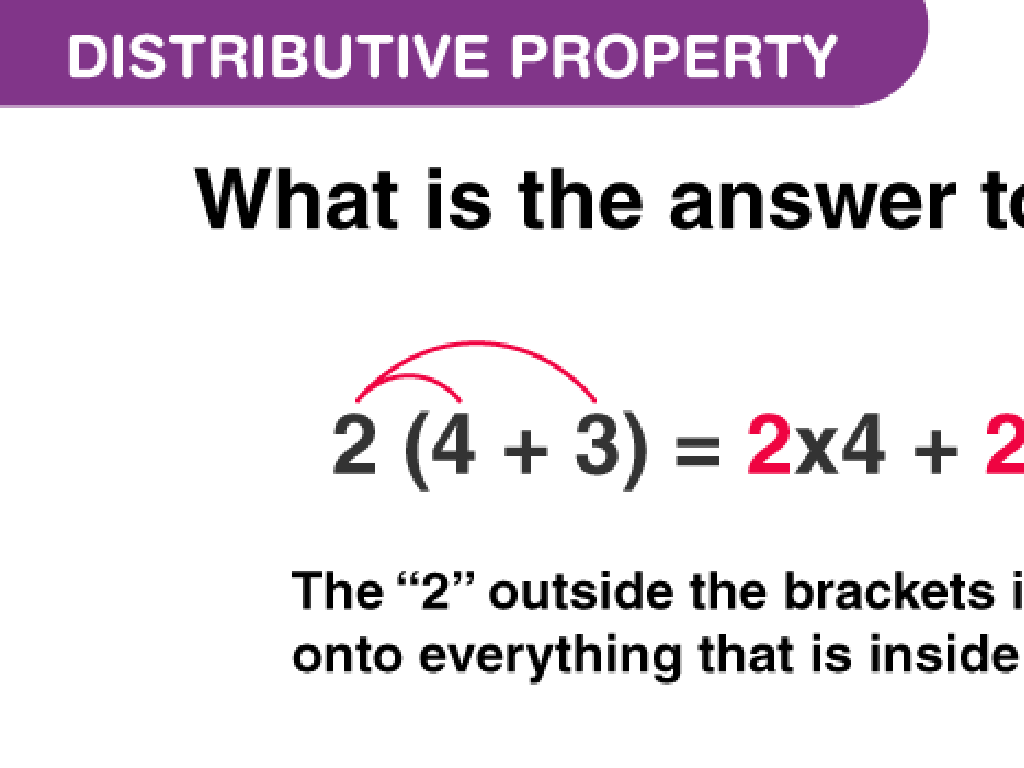Classify A System Of Equations
Subject: Math
Grade: Eighth grade
Topic: Systems Of Equations
Please LOG IN to download the presentation. Access is available to registered users only.
View More Content
Classifying Systems of Equations
– Define systems of equations
– A set of two or more equations with the same variables
– Real-world applications
– Intersection points can represent solutions like costs or measurements
– Classifying systems
– Determine if systems are consistent, inconsistent, or dependent
– Today’s learning goal
|
Begin the lesson by defining what a system of equations is, emphasizing that it involves multiple equations that we are trying to solve together. Highlight how these systems appear in real life, such as in business for cost analysis or in engineering for measurements. Explain the three types of systems: consistent (one solution), inconsistent (no solution), and dependent (infinitely many solutions). Today’s goal is to help students identify and classify systems into these categories. Provide examples of each type and encourage students to think of situations where they might encounter systems of equations. This foundational understanding is crucial for solving systems in future lessons.
Understanding Systems of Equations
– Define a system of equations
– A set of two or more equations with the same variables
– Examples of linear equation systems
– e.g., y = 2x + 3 and y = -x + 5 form a system
– Intersection points as solutions
– The solution is where the graphs intersect (x, y)
– Solving systems in math
|
A system of equations consists of two or more equations with the same set of variables. In this class, we’ll focus on linear equation systems, which graph as straight lines. The point where these lines intersect represents the solution to the system, meaning the values of x and y that satisfy all equations simultaneously. Understanding how to find this point is crucial in solving many real-world problems. Encourage students to visualize the concept by graphing simple systems and identifying the intersection points. This foundational knowledge will be applied to more complex systems in future lessons.
Classifying Systems of Equations
– Consistent Systems: One solution
– When two lines intersect at a single point
– Inconsistent Systems: No solution
– Lines are parallel and never intersect
– Dependent Systems: Many solutions
– Lines coincide, sharing all points
– Visualizing system types
|
This slide introduces students to the concept of classifying systems of equations based on the number of solutions they have. Consistent systems have exactly one solution, where the graphs of the equations intersect at a single point. Inconsistent systems have no solution because the lines are parallel and never meet. Dependent systems have infinitely many solutions because the lines coincide, meaning they are the same line and share all points. Use graphing as a visual aid to help students understand these concepts. Encourage students to sketch each type of system to reinforce their learning. Provide examples of each system type and ask students to classify them to check their understanding.
Classifying Systems of Equations
– Identifying Consistent Systems
– A consistent system has at least one set of solutions.
– Identifying Inconsistent Systems
– An inconsistent system has no solutions.
– Identifying Dependent Systems
– A dependent system has infinitely many solutions.
|
This slide aims to help students understand the classification of systems of equations. A consistent system is one where the equations intersect at least once, indicating that there is at least one solution that satisfies all equations. An inconsistent system is characterized by parallel lines that never intersect, meaning there are no solutions that satisfy all equations simultaneously. A dependent system consists of equations that are essentially the same line, implying an infinite number of solutions. It’s crucial to provide examples of each system type and to demonstrate how to graphically identify them. Encourage students to practice by providing a mix of systems to classify.
Solving Systems of Equations
– Methods to solve systems
– Graphing, substitution, elimination
– Choosing the best method
– Assess system type to decide
– Example with substitution
– Solve y = 2x + 3 and y = x + 5
– Consistent systems
– A system with one solution
|
This slide introduces students to the various methods available for solving systems of equations, emphasizing the importance of choosing the most efficient method based on the system’s characteristics. Graphing is visual but may be less precise, substitution works well with one easy-to-isolate variable, and elimination can quickly simplify systems. The example provided uses substitution to solve a consistent system, which is a system that has exactly one solution, demonstrating the process step-by-step. Encourage students to practice with different systems to become comfortable with each method and to recognize the signs that indicate which method to use.
Class Activity: Classifying Systems of Equations
– Group activity on systems classification
– Present your group’s findings
– Each group explains their classification and how they plan to solve the system.
– Discuss various solution methods
– Compare and contrast the methods used by different groups.
– Reflect on different solutions
– Understand that different methods can lead to the same solution.
|
This class activity is designed to foster collaboration and deepen students’ understanding of systems of equations. Divide the class into small groups and provide each with a set of systems to classify as consistent, inconsistent, or dependent. After classifying, each group should choose a method to solve their systems, such as graphing, substitution, or elimination. Groups will then present their classification and chosen solution method to the class. Facilitate a discussion on the various methods used, highlighting the pros and cons of each. Encourage students to reflect on how different approaches can lead to the same solution, reinforcing the concept that there can be multiple pathways to the same answer in mathematics. Possible activities for different groups could include solving by graphing, substitution, elimination, or matrix methods. This will cater to different learning styles and promote a comprehensive understanding of the topic.
Homework: Mastering Systems of Equations
– Solve classification problems
Classify systems as consistent/inconsistent and dependent/independent.
– Utilize online resources
Explore websites with interactive problems and video tutorials.
– Consistent practice is key
– Share difficulties in class
Discuss any challenges faced during practice in the next session.
|
This slide is aimed at reinforcing the concepts taught in class through homework and further practice. Assign a set of problems that require students to classify systems of equations as consistent or inconsistent and dependent or independent. Encourage the use of online resources such as Khan Academy or IXL for additional practice, which offer interactive problems and instructional videos. Remind students that consistent practice is essential for mastery in mathematics. Finally, create an open environment where students can share the difficulties they encounter with these problems in the next class, fostering a collaborative learning atmosphere.
Conclusion: Classifying Systems of Equations
– Recap system classifications
– Understand system types
– Knowing the type helps solve them effectively
– Encourage questions
– No question is too small, always ask!
– Seek help when needed
– Use resources like textbooks, online videos, and teachers
|
As we wrap up today’s lesson on classifying systems of equations, it’s crucial to remember the different types we’ve covered. Understanding whether a system is consistent, inconsistent, or dependent will guide you in finding solutions. Encourage students to always ask questions, no matter how trivial they may seem, as this is a complex topic that often requires clarification. Remind them of the available resources, including textbooks, online tutorials, and one-on-one time with teachers. Reinforce the idea that seeking help is a part of the learning process and is encouraged for a deeper understanding of mathematical concepts.






